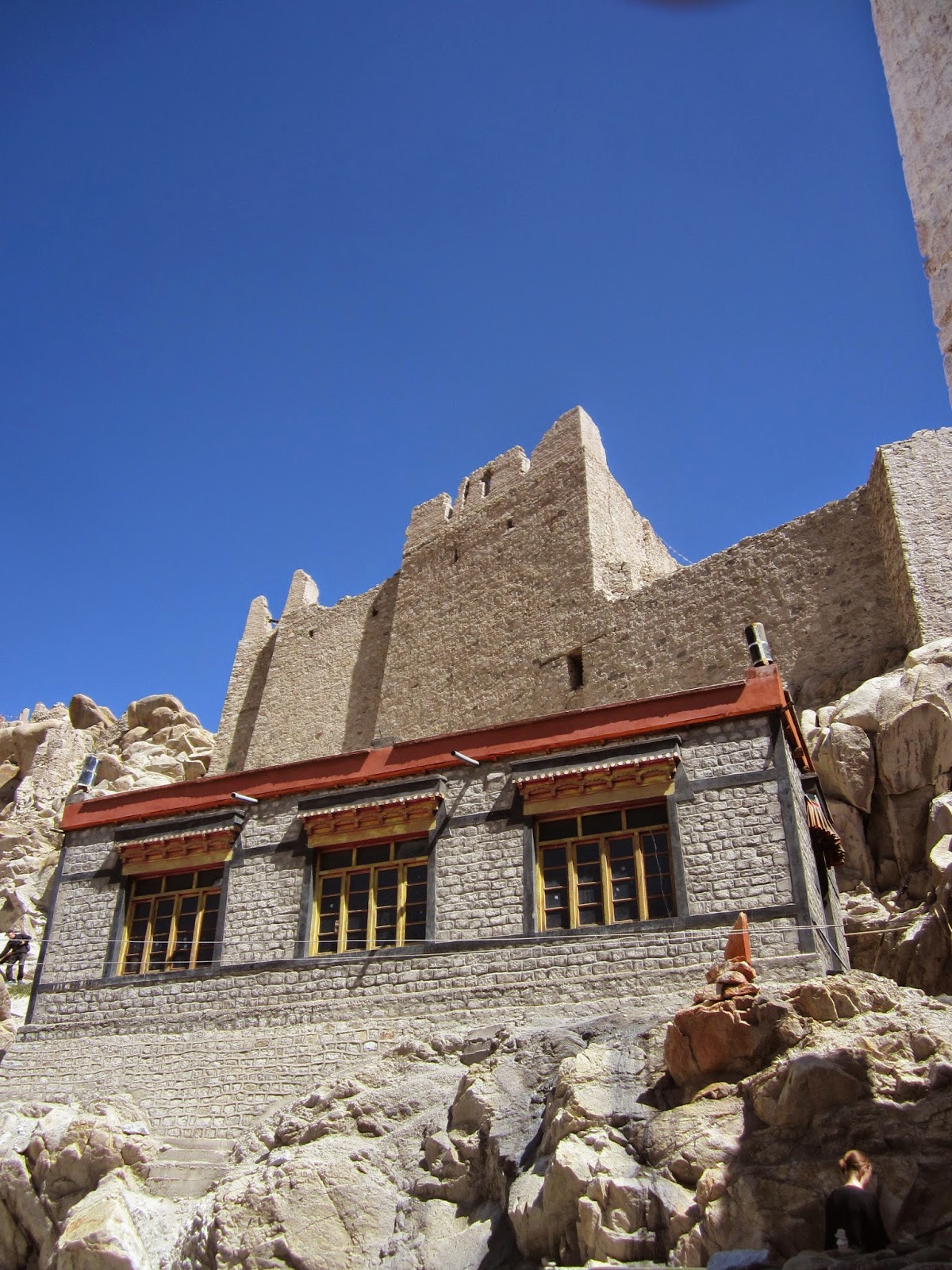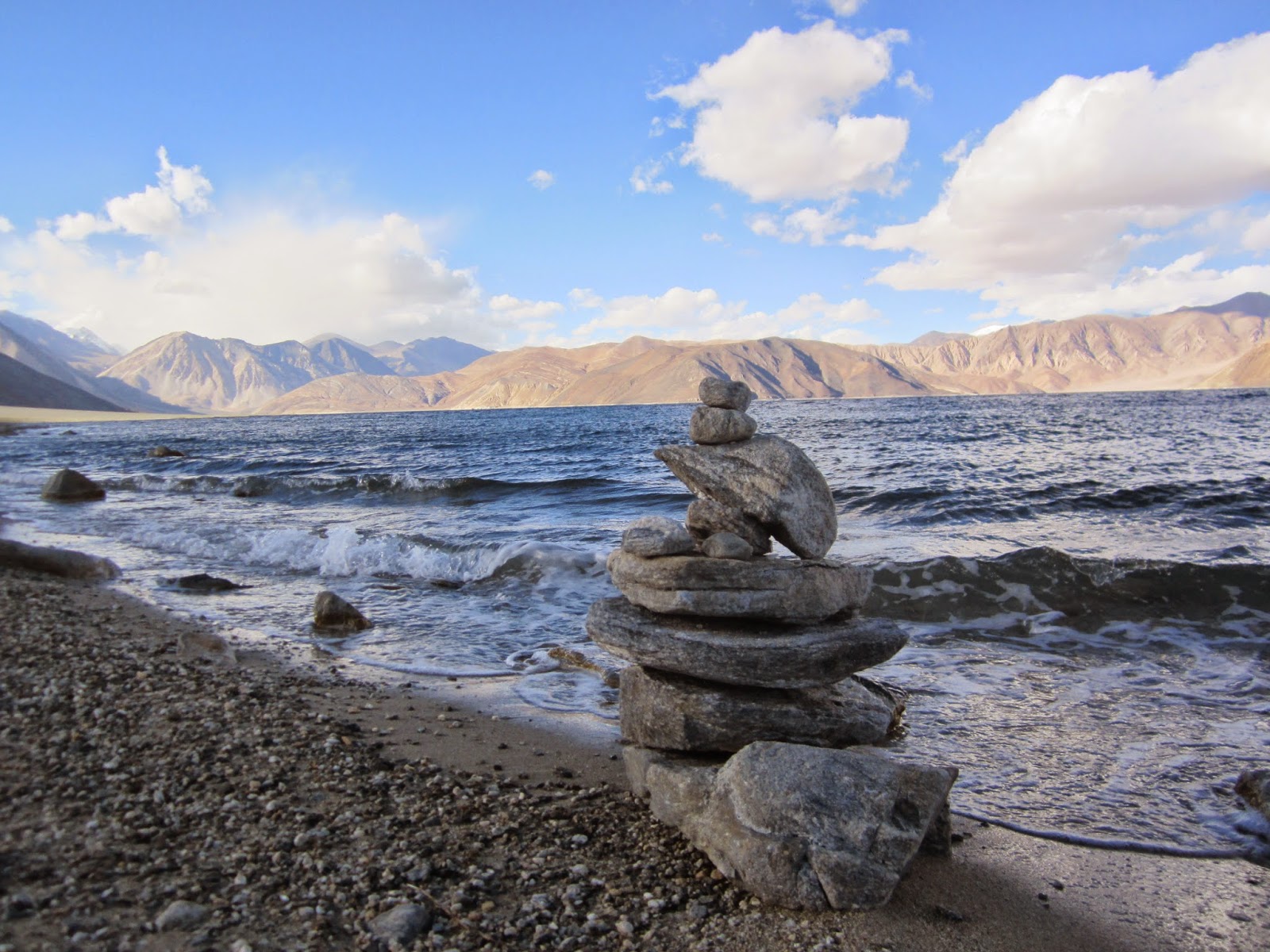We spent the first four days of our Himalayan trip sightseeing in and around Leh. This was partly to acclimatise to the high altitude environment before starting the trek, and this allowed us to learn about the history and culture of the region and experience the beauty of the local area.
Our sightseeing centered around monasteries which were typically living, working establishments with anything between one and 1000 resident Buddhist monks. With the exception of the caves at Ajanta, our trip to Leh was our first exposure to Buddhist culture which has prevailed in the region for at least the last 1000 years. Buddhism seems complicated, with many versions of the Buddha and different Buddhist sects, but very peaceful and welcoming to non-Buddhists. Travelling in India is a great religious education lesson in itself; I've learned more about Hinduism, Islam, Buddhism and even Christianity in the last year than I was ever taught in RE lessons at school!
Anyway, we visited lots of monasteries and various palaces that once housed the Ladakhi royal family, as shown in the pictures below.
Leh Palace - A 9 storey structure overlooking the town
Buddhist prayer books. There are hundreds of these which are read out loud by the monks.
Inside a monastery. Statues of various forms of Buddha, offering and a big drum are commonplace.
Prayer flags are everywhere in Ladakh and look very colourful fluttering in the wind
We were told that offerings of water are made because water is something that can be given "with the whole heart" unlike money (where the giver might inwardly feel sad to have given it)
A big Buddha statue. Note the hand position which is a Buddhist meditation gesture. Some of these statues were covered in real gold.
Prayer flags stretched from peak to peak in Leh
The Shanti Stupor. A modern Japanese built religious structure on a hill overlooking Leh, and the start point for Phil's half marathon.
Monks preparing momos (dumplings) at the Spituk monastery.
The main courtyard of the Spituk monastery
The confluence of the Indus and Zanskar rivers which we passed whilst travelling between different sights. The blue is the Zanskar and the brown is the Indus. For much of the year, the Zanskar river is frozen and the local walk down the ice for miles to commute from their homes to Leh.
The outside of the ancient Alchi monastery. This was constructed from carved wood. It's amazing that it's still standing!
An original old Buddhist wall painting. Lots of the paintings had been "restored" but sadly this seems to mean painting over them rather than repairing the originals.
The biggest monastery that we visited, with over 1000 monks and a museum.
Scary picture
Thiksay monastery - Another big one. Monasteries are usually built on hills to ensure that they are quiet and away from the noise of the village below.
A very big Buddha. I think this one is the "Future Buddha" who it is predicted will come to Earth in 2500 years from now.
The stupor at Shay Palace. There is a solid gold ball on the top of the structure.
Shay Palace from below
A beautifully situated monastery on the route from Leh to Pangong.
In addition to our cultural excursions, we spent a night at Pangong Lake which is situated at 4400m above sea level, spanning the India / Tibet border. It was a six hour drive from Leh which involved crossing a 5300m pass (the Chang La pass), one of the highest motorable roads in the world, and breathtaking views across the valley as you weave up the mountain to the pass. I get a little travel sick in the back of cars which wasn't great, but it was well worth it. We spent a night at a fixed camp next to the lake given the length of the journey and I would thoroughly recommend this to anyone visiting Ladakh. The natural beauty of the lake and car journey is astonishing.
Looking back over the verdant valley as we drove up the mountain
Getting higher...
...and higher...
...until we reached the pass! The air was pretty thin and there are lots of army camps in the area owing to the proximity to China / Tibet.
Posing at the trig point. It was a bit nippy and Phil wasn't dressed for the conditions.
There was a gang of Himalayan marmots on route which were both tame and cute. Phil got this shot after a long photography session.
Pangong Lake. It is apparently very deep, and I can confirm that the water is freezing.
My Bob hat came out for the first time on this trip - crocheted by my cousin Will who set up a hat business with his girlfriend earlier this year. This was my first opportunity to wear a thick woolly hat in India.
Prayer flags adding a human touch to the stark landscape
The 3 Idiots....is a popular Bollywood film that ended with a scene shot on this spot at Pangong Lake.
Phil's rock photography.
Snowy peaks
Our camp for the night. The running water and western toilets and bathrooms at the back of each tent were a big bonus!

































No comments:
Post a Comment